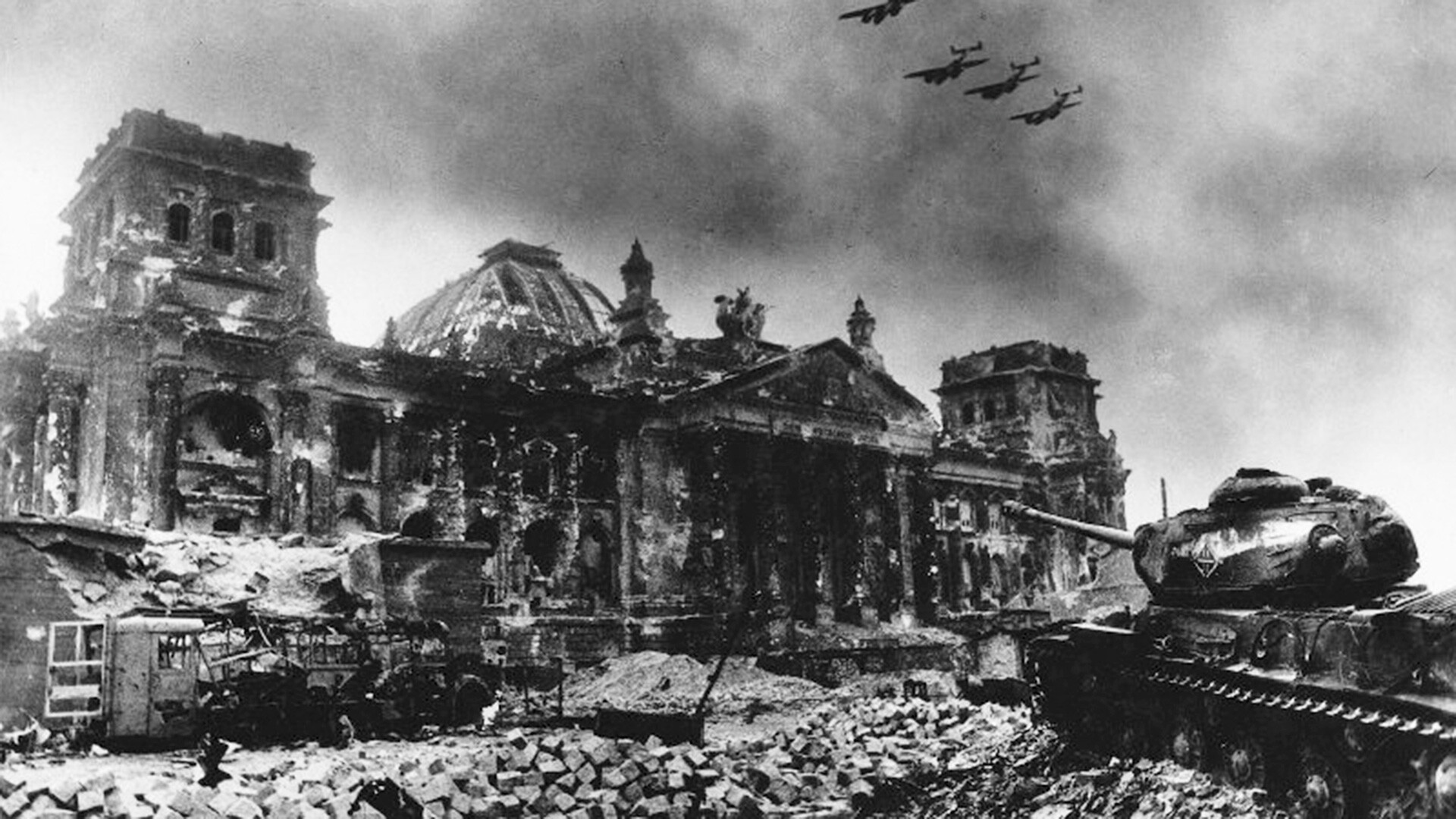
“In the last glimmers of the dying day, a huge, heavy and gloomy structure loomed through the clouds of smoke. Above it, the ribbed dome gleamed with shards of broken glass.” This is how Colonel Fyodor Zinchenko, whose 756th Rifle Regiment took part in its storming, saw the Reichstag on April 29, 1945.
After the fire of 1933, the Reichstag lost its political significance - meetings of the German parliament began to be held in the neighboring Kroll Opera House, until they stopped altogether in 1942. During the Battle of Berlin, none of the Nazi top brass or German generals were present.

However, the Soviet Union saw this building as a historical embodiment of the German state itself. It was where the rise of the Third Reich began and where its final defeat was to take place.
The Nazis also considered the Reichstag one of their main symbols. Therefore, they intended to defend it to the very end.
The former building of the German parliament was defended by Wehrmacht soldiers, Waffen SS, Volkssturm militia and even cadets of the naval school from Rostock - over 1,000 people, in total. Nearby German units, which had armored vehicles at their disposal, where also on hand to help the garrison at any moment.
At noon on April 30, the artillery of the 3rd Shock Army began shelling the Reichstag. Dozens of artillery pieces, tanks and self-propelled artillery units pounded the building with direct fire, aiming at the windows where the enemy had equipped firing points.
“Infantrymen, preparing to attack <...> adapt themselves for a rush forward, choose a point of support for the leg, for the elbow and place their personal ‘arsenal’ more conveniently,” Zinchenko wrote. “Neither tanks nor artillery will help in the Reichstag, everything will be decided by a machine gun, a rifle and a grenade. Therefore, the greatest value for each fighter is one more spare clip, one more grenade...”
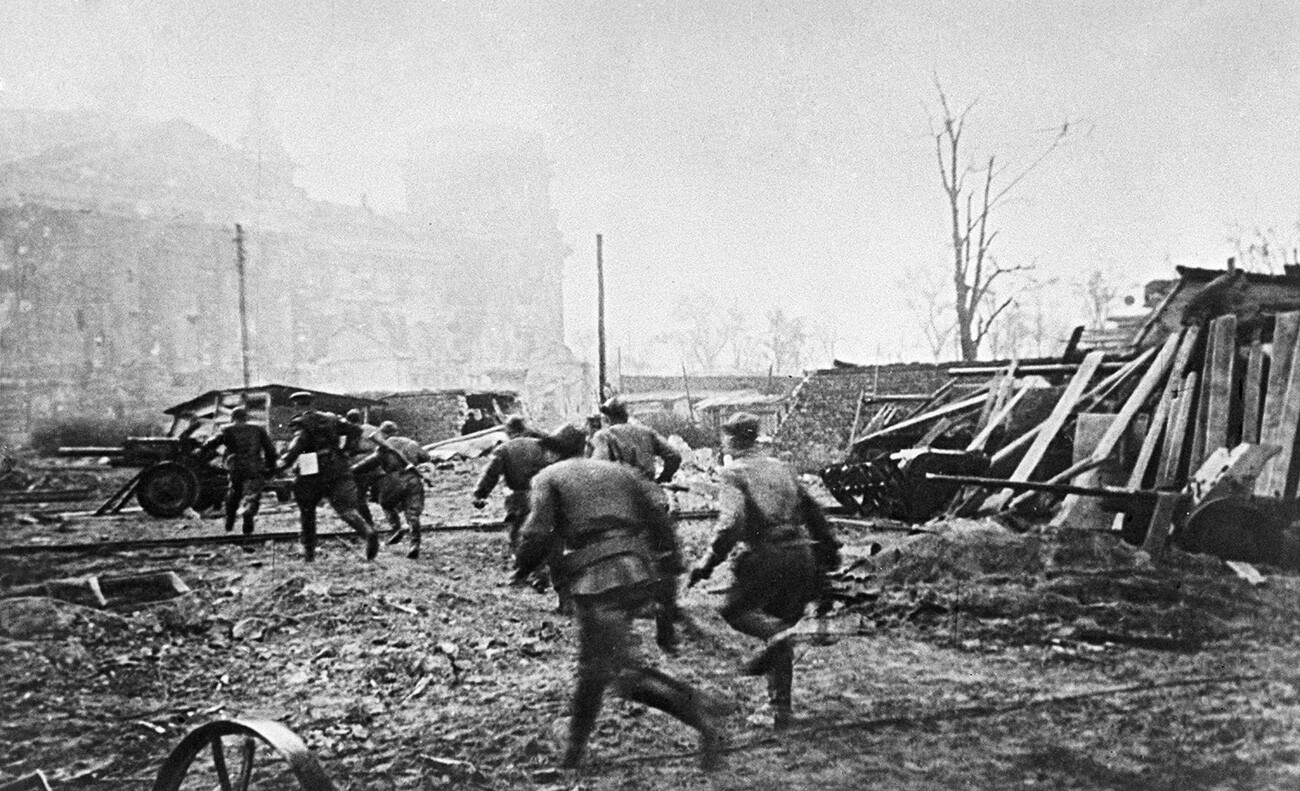
The preliminary artillery bombardment lasted thirty minutes and, at 2:30 pm, the assault began. As soon as the Red Army troops rushed to the building, an avalanche of enemy fire fell on them - fire came both from the Reichstag itself and from the neighborhood of foreign embassies and the Brandenburg Gate area.
There were only 250 meters between the Soviet troops’ positions and the front entrance, but soldiers could overcome no more than a hundred. They were literally pinned to the ground, unable to raise their heads.

This stalemate lasted for several hours. Gradually, however, the Soviet soldiers, returning fire, moving on the ground on their bellies, hiding in craters and behind destroyed armored vehicles, were able to get close to the building and make the final breakthrough.
“The Nazis are raining a hurricane of fire on us. But, our onslaught does not weaken. The whole mass of soldiers on a wide front rushes forward. There are 50... 30... 20... meters and, finally, we reach the wide staircase leading to the main entrance of the Reichstag. An incredible movement of people, cries, commands. The wounded call for medics, those struck by a bullet fall backward,” infantryman Mikhail Bondar recalled.
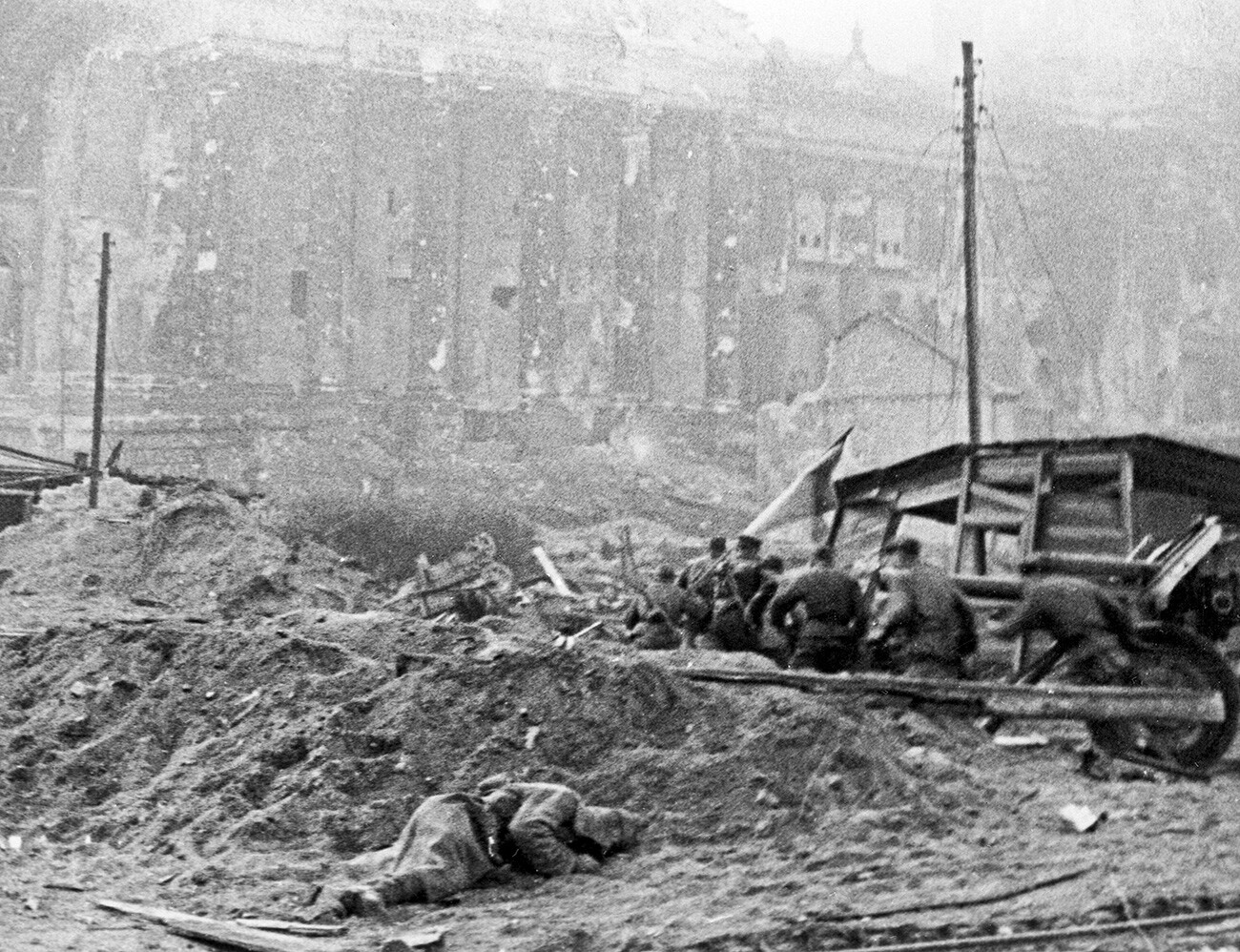
Concentrating to the left and right of the entrance, the soldiers pelted the doorway with grenades and rushed inside. On the evening of April 30, fierce fighting began inside the Reichstag building itself.
“The corridors, halls and rooms were filled with the rumble of gunfire, grenade explosions and the screams of opponents engaged in mortal combat. Inside the building, everything was burning and rumbling, the rooms were filled with smoke,” Zinchenko wrote.
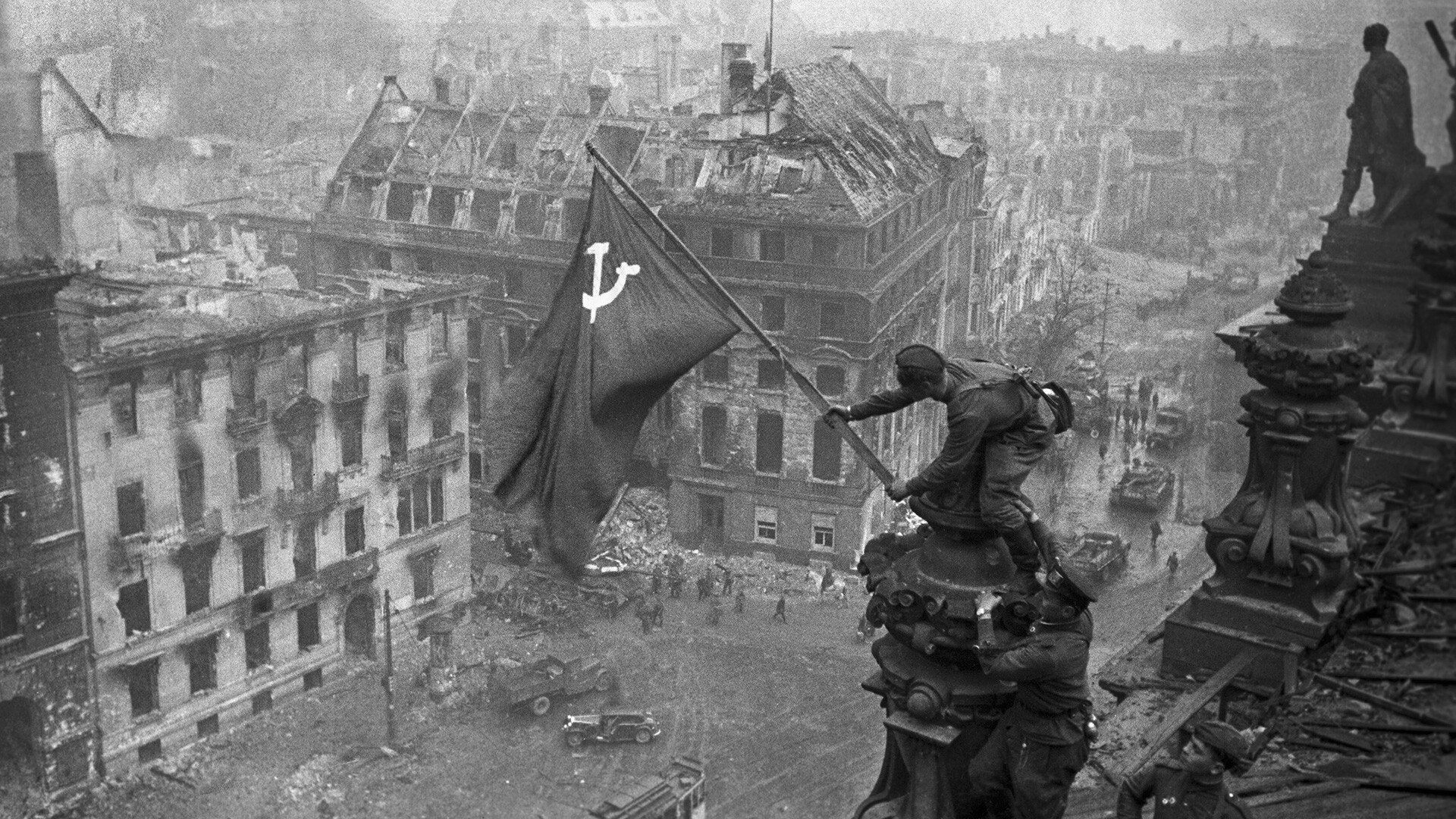
Despite heavy enemy resistance and German counterattacks from the Brandenburg Gate area, the Soviet troops managed to gain a foothold on the first floor. In the former room of the Kaiser's adjutants, they set up a command post and installed a telephone cable. A small field hospital was also set up nearby.
One of the main tasks for the Soviet troops during the battle for the Reichstag was the installation of the red banner on its roof. For this purpose, the assault groups sneaked to the second floor and, without clearing it, went straight to the roof.

Already at dusk, under enemy fire from neighboring buildings, soldiers installed red banners there. The official Victory Banner was set up by scouts Mikhail Egorov and Meliton Kantaria of the 756th Rifle Regiment. Only the Germans from neighboring buildings failed to shoot down this one.
The banner was located near the sculptural group and, after the end of the fighting, was moved higher to the dome.
After a short lull at night, fierce fighting continued throughout the day on May 1. The continuous shooting, exploding grenades and ‘Faustpatrons’ caused such smoke and dust from the plaster in the building that visibility was almost nil at times.
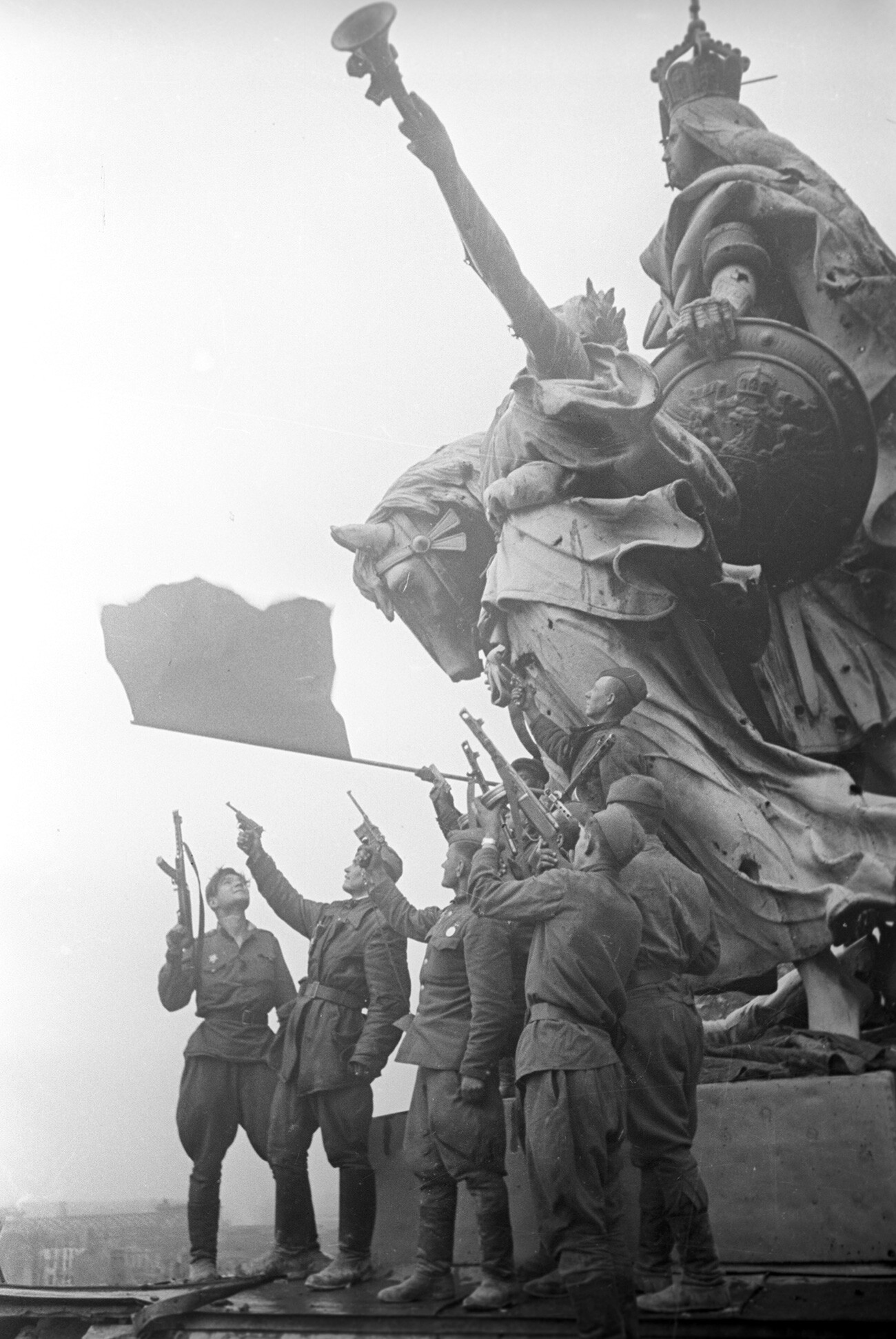
Moreover, a fire started in the building, either as a result of the fighting or because of a deliberate arson attack by the Germans, who were gradually forced into the basement. It was only by 3 pm that the fire was extinguished.
By 7 pm, the Red Army had completely surrounded the Reichstag and the garrison could no longer hope for support from outside. The Germans offered to negotiate, during which they tried to bargain various terms of surrender, but received a categorical answer - only complete unconditional surrender.
Three hundred surviving enemy soldiers surrendered in the early morning of May 2. At about the same time, the entire Berlin garrison ceased resistance.
More than 2,500 German soldiers were killed during the battles for the Reichstag and the adjacent territories. The losses of the Red Army, however, remain unknown.
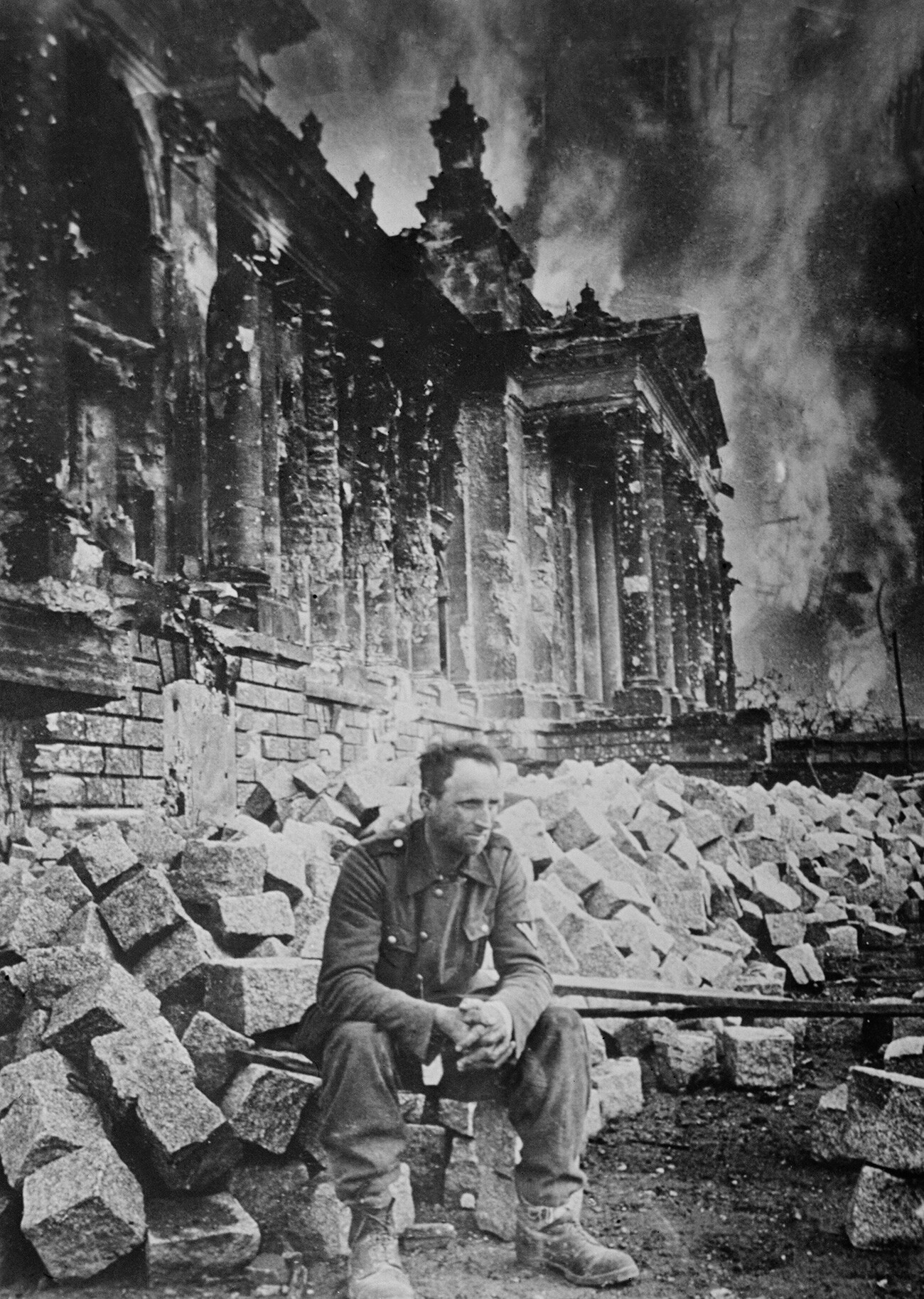
If using any of Russia Beyond's content, partly or in full, always provide an active hyperlink to the original material.
Subscribe
to our newsletter!
Get the week's best stories straight to your inbox